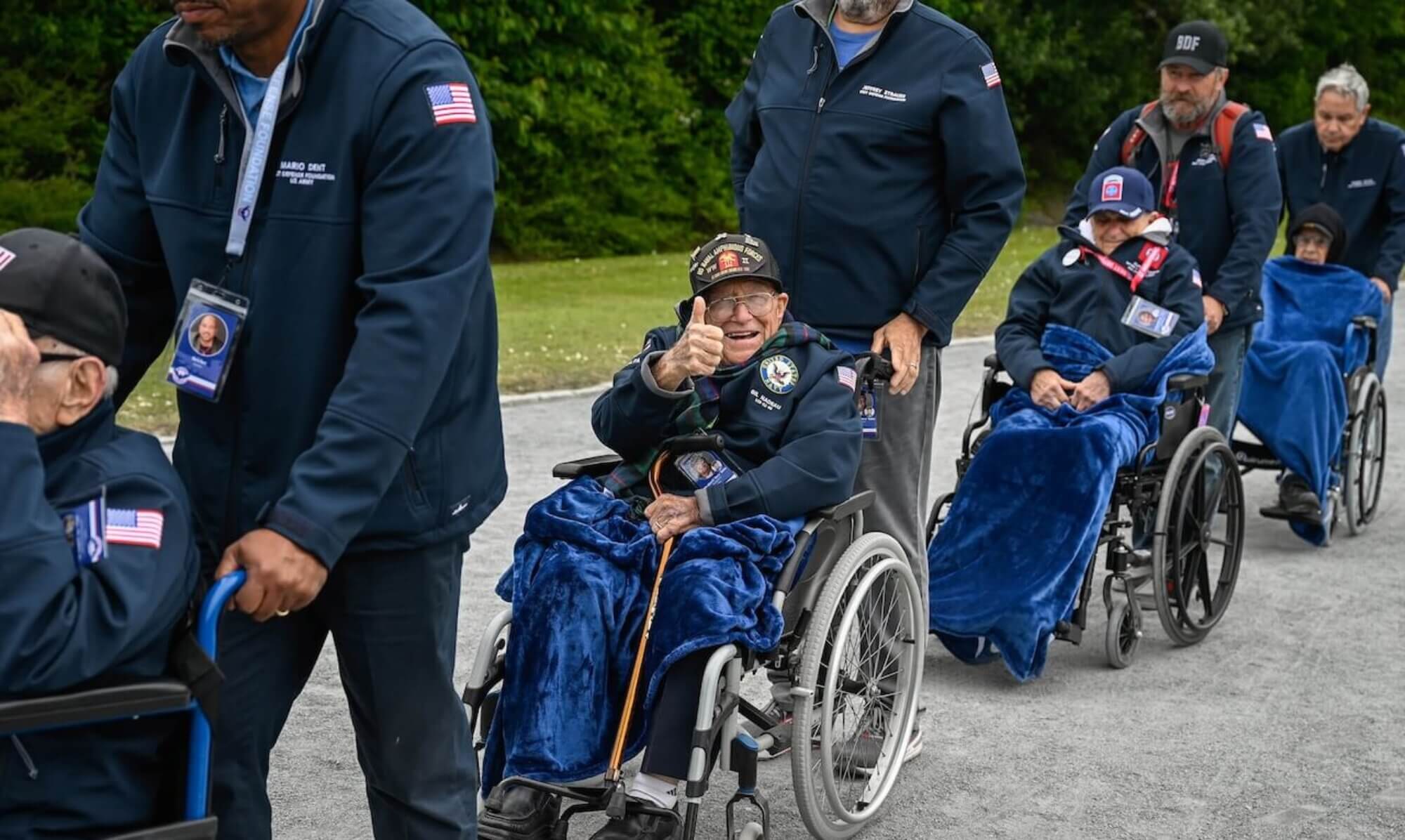
Introduction by Bill Cullifer, Founder of Americans for a Stronger Navy
As a former Destroyer Navy sailor, my time aboard these ships during my teenage years profoundly shaped my life. These experiences inspired me to establish Americans for a Stronger Navy. Our organization is dedicated to highlighting the benefits of naval service and the vital role it plays in strengthening our nation’s defense. By sharing the stories of sailors like those on the Henry B. Wilson, DDG7, we aim to foster a deeper appreciation for the sacrifices and achievements of our naval forces. I hope readers will enjoy these personal accounts and gain insight into the lives and contributions of our brave sailors.
Introducing Michael Keeton
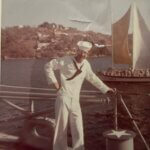
One such sailor is Michael Keeton, who served aboard the Henry B. Wilson during one of the most critical periods in modern history. His story provides a vivid glimpse into life on the ship and the experiences of those who served during the Cuban Missile Crisis.
Growing Up and Joining the Navy
Michael Keeton’s interest in the Navy was sparked by his father, who served in the Seabees during World War II, sharing stories of his adventures in England, France, and other European countries. Inspired by these tales and TV commercials glamorizing life at sea, Michael knew that he wanted to join the Navy after high school.
Graduating at 17, Michael joined the Navy on a “kitty cruise,” which meant he would be discharged the day before his 21st birthday if he joined by age 17. After an uneventful Boot Camp, Michael and several others were assigned to the USS Henry B. Wilson, DDG7.
Life on the Henry B. Wilson
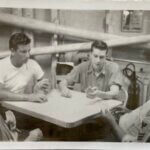
Reflecting on his time aboard, Michael Keeton remarked, “I always thought I was lucky to be stationed on the Henry B. Wilson, DDG7. The crew and officers were great.” The ship offered more comfort and better living conditions than many older vessels still in service. The Henry B. Wilson boasted advanced radar systems, missile launch capabilities, and improved living quarters, making life on board more bearable during long deployments.
Michael highlighted the ship’s technical advancements, noting, “The Henry B. Wilson had the latest technology at the time, including advanced radar and missile systems, which made us feel a bit more secure despite the tensions we faced.” These features were crucial in maintaining the crew’s morale and operational efficiency during their missions.
Pre-Commissioning and Early Days
In September 1960, Michael joined the pre-commissioning school in Newport, Rhode Island, for a three-month education on firefighting, stopping flooding, and other essential safety measures for ship life. In November, he and other crewmembers reported to the ship in Boston, Massachusetts. Seeing the ship for the first time was impressive, especially for a young man from Ohio.
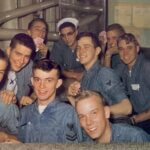
“The ship was not loaded with crew or provisions or ammunition and sat so high in the water,” Michael recalled. About 40% of the crew were fresh out of Boot Camp, making the crew very raw. Despite the challenges, many of them stayed together over the next two years.
The Harsh Winter and Journey to San Diego
The winter of 1960-1961 in Boston was one of the harshest in years. Michael remembered the deck crew painting the ship in freezing temperatures, only to have the paint run off when they hit warmer waters. Their journey to their home port of San Diego, California, included stops at Newport, Rhode Island; Norfolk, Virginia; through the Panama Canal; Lima, Peru; and Acapulco, Mexico.
In Acapulco, a famous cliff diver came aboard and performed a dive from the top of the mast into the bay, a spectacular show for the crew. They reached their new home in San Diego on April 14, 1961.
Duties and Challenges
Michael was assigned to the sound and security watch, patrolling the ship with a .45 caliber pistol, albeit without bullets. He enjoyed midnight snacks from the Chiefs’ galley during the midwatch. One memorable incident involved the theft of an M1 rifle. The captain announced that no one would leave the ship until the rifle was found. Michael advised the thief to anonymously inform the captain of the rifle’s location, which resolved the crisis.
During a Westpac cruise, the ship encountered severe weather, causing significant damage to the aircraft carrier Coral Sea. The executive officer ordered two crew members to retrieve a fire hose in dangerous conditions, which led to his reprimand by the captain.
The Cuban Missile Crisis
The tension of the Cuban Missile Crisis remains a vivid memory for Michael Keeton. “I rose one morning, while homeported in San Diego, and saw nothing but US Marines camped everywhere and as fast as possible they were loading up on ships and moving out toward Cuba.” The urgency was palpable as the crew prepared to sail into potential conflict. “We made preparations to go to sea, and this was a very dangerous time. We all wrote our letters home to our families and you can imagine what they said.”
During this period, the mood in America was tense and uncertain. The cost of everyday goods like gasoline, which hovered around 31 cents a gallon, became trivial concerns compared to the looming threat of nuclear war. Families across the nation huddled around their television sets, watching President Kennedy address the nation, their anxiety mirrored by the sailors on the Henry B. Wilson.
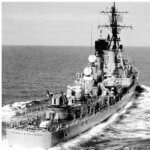
Michael described the atmosphere onboard, “As we sailed towards the Panama Canal, the tension was high. Everyone was on edge, but we tried to stay focused on our duties. The uncertainty of what lay ahead was the hardest part.” Despite the fear and anxiety, the crew’s training and camaraderie helped them remain resilient.
“As we sailed for three days toward the canal,” Michael recounted, “we didn’t know if we were heading into war. The news of the crisis easing was a huge relief. We turned back to San Diego, and I remember the sense of collective relief and gratitude among the crew. Our prayers had been answered.”
Featuring the Sailor’s Perspective
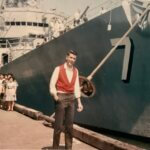
Michael Keeton, reflecting on those tense days, appreciated the camaraderie and leadership on the Henry B. Wilson. The experience left a lasting impression, shaping his view on service and duty. Keeton often reminisced about the sense of unity and purpose that bound the crew together, making the ship not just a vessel, but a home.
“Despite the fear, we found strength in each other. The leadership was exceptional, ensuring that everyone stayed calm and focused,” Michael shared. The bonds formed during those challenging times were unbreakable, and the shared experiences created a family-like atmosphere aboard the ship.
Technical Details and Legacy

The Henry B. Wilson, as an Adams Class Destroyer, boasted advanced capabilities including guided missile systems, sophisticated sonar, and radar technology. These features made it a formidable presence during the Cuban Missile Crisis, ready to respond to any threat. Its contributions underscored the importance of modern naval technology in maintaining global peace.
“The technological edge we had with our guided missile systems and radar gave us confidence,” Michael noted. “It was a clear demonstration of how crucial modern advancements are in maintaining a strategic advantage.”
Conclusion
Looking back, Michael Keeton feels a deep sense of gratitude for his time on the Henry B. Wilson. “Our prayers had been answered” echoes the relief and appreciation felt by the crew. The legacy of the Henry B. Wilson and its sailors endures, highlighting their critical role during a pivotal moment in history. This ship and its crew exemplified resilience and readiness, characteristics that remain vital to the US Navy’s mission today.
Michael’s detailed account provides a powerful narrative of bravery, unity, and technological prowess during a time of great uncertainty. It is a testament to the enduring spirit of the sailors and the critical role they play in safeguarding our nation.
